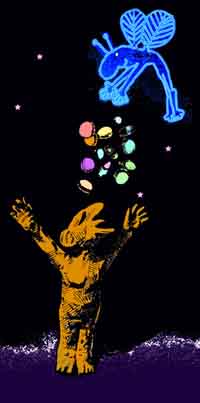The Treatment Paradigm
The treatment paradigm focuses on the reductionist approach of treating symptoms rather than healing the underlying problem. It operates from the Paradigm of Disconnection, finding a causative agent to blame such as a toxic substance or an infectious agent. Subsequently the treatment paradigm attempts to overpower the symptoms, rather than seeing them as intimately connected to the whole - from their environment to their consciousness and lifestyle. Awareness, education, and personal growth, if considered at all, have a secondary role at best. The treatment paradigm does little to encourage the patient to recognize the connections between, for example, their lifestyle or environment, and their health. Until they make these connections, they cannot be responsible in any constructive way, for their health. The financial costs are astronomical, and getting worse every year.
The emotional toll on provider and consumer is too great to be ignored. This medical model fosters dependence of the patient on the professional. The public demands a "pill for every ill" and wants relief now! The doctor, frequently cast in the role of a "pill fairy," (fig.2) must possess both omnipotence and infallibility - a role some are only too ready to play, but the pressures inevitably become too great, and professional burnout, from ill-temper to suicide, frequently results.
The Pill Fairy
Medical schools still teach the theory that germs cause infections. Backed by evidence from quantum physics, the Paradigm of Connection holds that outside agents are not the actual cause, but only the mechanism by which illnesses are manifested. Harmful agents are always around; but what causes one person to lower her resistance and get a disease when the person sitting next to her doesn't? That question leads us to the underlying cause of disease. (continues)


